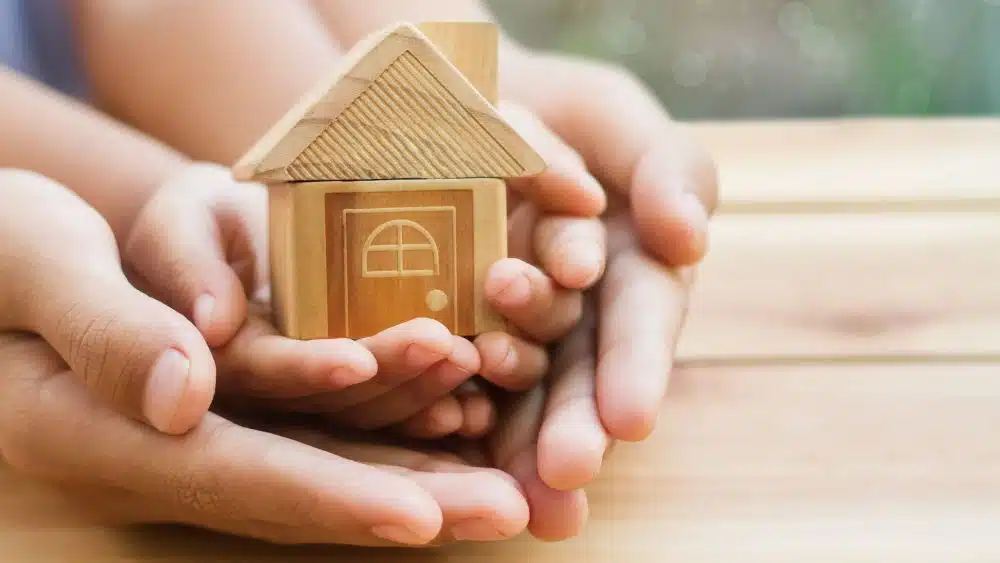
Bigger houses offer more bedrooms, bathrooms, living spaces, and bonus rooms like a home office, crafts room, playroom or game room.
Smaller houses are more affordable to heat, cool, furnish, and maintain and easier to clean.
Given the cost-saving tradeoffs of small spaces and the obvious allure of a larger home, how much square footage do you really want?
Average Square Footage of a House
The average house size is right around 2,500 square feet, but that doesn’t mean you should aim for the middle and hope for the best.
The answer to your specific home needs is likely to be more about your lifestyle than the specifications of different-sized houses, says Dennis Ouellette, vice president of operations at homebuilder Taylor Morrison in Dallas.
“Usually, buyers will tell us pretty quickly how the home they’re living in isn’t working for them and then we can demonstrate how to solve that concern,” Ouellette says.
How Space is Used
Once buyers find a home that works for them, their focus often shifts from size to functionality.
When it comes to growing families, schools and affordability are two of the most common considerations. The possibility that a home may be too big is rarely a concern for buyers.
“At that stage of their lives, it’s about ‘How much house can we afford with the schools and location we want?’ ” Ouellette says. “We don’t hear them saying, ‘This is too much house for us.’ ”
Experienced homeowners tend to be more specific about their square footage needs.
“We talk to people who’ve had nine homes,” Ouellette says. “They say, ‘We can’t live in anything less than 2,200 square feet.’ They know exactly what they want.”
Taylor Morrison sells homes in Arizona, California, Colorado, Florida, Georgia, Illinois, North Carolina, South Carolina as well as Texas. The company delivered approximately 7,000 new homes to buyers in 2016.
The average size of new homes built in the United States grew 62 percent from 1,660 square feet in 1973 to 2,687 square feet in 2015, an increase of 1,027 square feet, according to the U.S. Census Bureau.
The Bedroom-Living Space Ratio
Despite that steady rise in square footage, design is so crucial that a smaller home might be a better fit for a particular buyer than a larger one, depending on “the way the square footage is assembled,” says Jay Kallos, vice president of architecture at Ashton Woods in Atlanta.
One important element is the ratio between bedrooms and living space. The bedroom count, Kallos explains, is “the primary driver” for total square footage.
“A rule of thumb that we have is: for every bedroom, you need to provide places for two people to sit in the dining area and living area,” he says.
Another of Kallos’ rules of thumb is that each generation — grandparents, parents and children — living in a home should have an “away space” that affords privacy from other family members. In an urban area, that space might be outside the home. In a suburban local, it’s more likely to be within.
Budget-Minded Choices
One obvious constraint against more square footage is the relatively higher cost of bigger homes.
Some custom-home buyers want what they want and are willing to pay for enough space to accommodate their desires, while others reconfigure their needs to fit the size of home they can afford within their budget, says Ryan Thewes, a residential architect in Nashville, Tenn.
“Typically, buyers say, ‘We would like a 3,000-square-foot house. We have to have a gym. We have to have a crafts room.’ All of a sudden their house is 4,500 square feet,” Thewes says. “We can quickly do the math and say, ‘Is that theater room really worth X amount?’ A lot of the time, the answer is no.”
The room most often axed is the gym.
“It takes up a lot of space,” Thewes says. “A lot of times that can get allocated to the basement.”
Splurging on Master Ensuites
Buyers are often surprised by the functional use of space in today’s new homes and how much square footage they can buy, says Ben Rutt, director of marketing at Keystone Custom Homes, a custom home builder headquartered in Lancaster, Pa.
Rutt says many buyers see “so much value in the larger homes” that they end up buying a bigger residence than they’d planned. This love of space is so prevalent that some empty-nesters end up upsizing rather than downsizing.
“Some people come in after their last kid has moved out and buy our largest floor plan,” Rutt says. “They’re splurging on themselves.”
Much of the extra space in these splurgy residences is devoted to a bigger master bedroom, larger master bathroom and dual walk-in closets.
“We’re seeing a lot more space devoted to the owner’s ensuite,” Rutt says.

Marcie Geffner is an award-winning freelance reporter, writer and editor in Ventura, California. In the last decade, she has penned more than 1,000 published stories about residential and commercial real estate, banking, credit cards, computer security, health insurance and small business, among other subjects. Editors describe her as “detail-driven,” “conscientious,” “smart” and “incredibly versatile.” Her award-winning reporting has been lauded as “rock solid,” “spot-on relevant,” “informative,” “engaging,” “interesting” and “nuanced.” Her stories have been cited in seven published nonfiction books and two U.S. Congressional hearings.
Prior to her freelance career, Geffner was senior editor of California Real Estate magazine. Later, she became managing editor of Inman.com, an independent real estate news website. She also has prior employment experience in technical writing, corporate communications and employee communications. She received a bachelor’s degree in English with high honors from UCLA and master’s degree in business administration (MBA) from Pepperdine University in Malibu, California. She enjoys reading, home improvement projects and watching seagulls at the beach.
 Building a Solid New Home Foundation
Building a Solid New Home Foundation